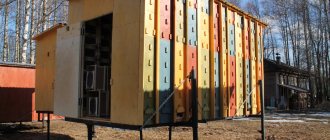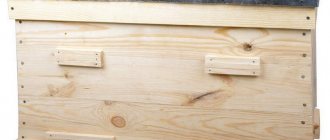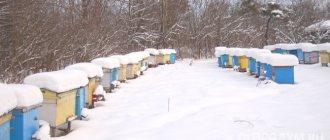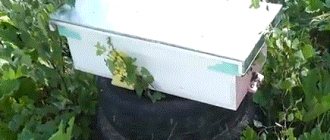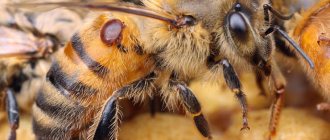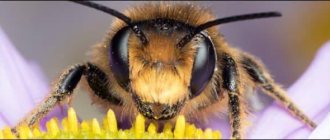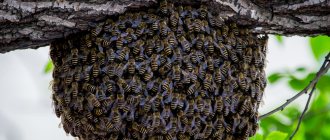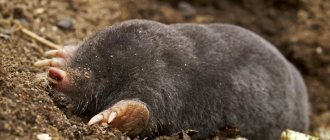This beekeeping system is widely used in industrial apiaries all over the world, as it takes minimal time to service one bee colony and improves the quality of commercial honey. The technology is designed for Karpatka or Karnika bees, for Bashkiria and regions similar in climatic conditions. Therefore, for other regions you need to make your own adjustments based on climatic and honey collection conditions.
Bees from the winter hut are exposed when the temperature in the shade is +7 +10 degrees - approximately April 5-10. After the first cleansing flight, the bottoms are changed, cleaned and burned. If the bottom is mesh, then a sheet of foil insulation is placed between the body and the bottom to insulate the nest. As soon as the weather permits, a spring inspection of bee colonies is carried out and the nest is reduced. At the same time, the honeycombs are culled, taking away the oldest and blackest honeycombs, which will subsequently be melted down. The nest is insulated, for this purpose insulation is placed on both sides - a diaphragm made of a 20 mm thick sheet of foam plastic wrapped with tape; we also insulate the nest on top, reducing the tap holes. During the inspection, we pay attention to the availability of food; there should be enough food for two weeks; when the next inspection takes place, we replenish food supplies if necessary. After 2 weeks we do the next examination. We expand the nest, if there is no bribe, we put in light brown drying material; if there is bribe, then we put in foundation. We replace the old queen with a young one to reduce the swarming mood of the bees. After replacing the queen, when the bees occupy all 10 streets, we install a Hahnemann grid and set up a store. If there is no bribe in nature, then the bees are reluctant to go to the stores, and if the bees do not go to the stores, then strong colonies can enter a swarm state.
The second and subsequent magazines are placed in a cut, that is, as soon as the bees have mastered the first magazine, it is removed and an empty magazine is placed in its place, and a full magazine is placed on top of the empty one. Bees do not like the gap between the nest and the top honey store, and therefore quickly fill the empty store with honey. Subsequent magazines are placed in the same way, the full magazine is removed and an empty one is placed and then a full one. Therefore, the honey in the top store is always sealed and ripe. After the bees have mastered the shops, they take the apiary out for migration. As a rule, this happens 60-70 days after the exhibition from the winter hut (June 10-15), by this time the bees occupy a building in which there are 8 brood frames and have 1-2 magazines, in this state the first honey collection from sainfoin begins. When pumping out honey, they pump out honey only from stores, they don’t look into the nest, the honey is taken immediately by the housings, the bees are removed from the housings with a blower, this works very well because the 145 mm frame is short and the bees are selected very easily, unlike housings on the frame 300 or 230 mm. If by this time the bribes end and the theft begins, then bee removers should be used instead of blowers; bee removers of the Quebec system work well. Around August 20, the last cases of honey are selected. After this, the Hahnemann grid is removed and strips with acaricide are placed in the nest to combat the tick. They feed the bees for the winter; they do not take honey from the nest, but simply supplement the feeding of the bees. In October, when there is no longer any brood left in the nest, the final treatment of the bees with bipin for mites follows. Subsequently, the bees are brought into the winter hut. In winter, bee colonies are strong at 10 frames and there is no need to reduce them, only weak colonies are reduced.
Like every technology, it has its pros and cons. The advantages of this technology. The time spent serving one family is reduced, since they rarely look into the nest. One beekeeper with an assistant can easily serve the main apiary of 150-300 bee colonies. Nest and store frames do not mix, so commercial honey is pure, without antibiotic impurities and residual traces of veterinary drugs. Bees do not print honey on a 300 mm frame at the same time, the upper part of the frame is already sealed, and at the bottom the honey is not yet sealed, raw, the bees print a 145 mm frame very quickly, so the honey is always ripe and of high quality. Another advantage of this system is that the bees go into the winter on 10 frames and there is no need to reduce the nests, which simplifies working with them. But there are also disadvantages to this system, the main disadvantages are the difficulty of culling old black honeycombs, and also the fact that bees do not master the store well. There is also a big problem where to get good fertile queens in large quantities in early spring. The problem of bees moving to stores is solved in the following way: the evacuated store frames are not given to the bees to dry, but are left until the next season. When placing the magazine on the nest, it is equipped with such frames, having previously sprayed them with water from a spray bottle. The bees hear the smell of honey and go into the store to choose syrup and thus become familiar with the store, this is better than just putting out dry goods. Honey in honeycombs does not sour if it is ripe, of course, the remaining honey does not ferment, but crystallizes, and the honeycombs look like a light spray of honey. The problem of culling old combs and where to get good fertile queens in large quantities in the spring can be solved. But for this it is necessary to leave a small apiary in the sunbeds at a stationary point. Such an apiary is needed precisely for building new honeycomb frames, which is what it will do all season. From the beginning of the spring whitewashing of the frames until the end of the honey harvest, a wintering bee colony, if properly loaded with foundation, can easily build up to 40 or more frames. A simple calculation shows that if there is an apiary of 300 bee colonies, 3000 nesting frames are required. When replacing the nesting frame every 3 years, every year in the apiary it is necessary to replace a thousand nesting frames. Thus, to provide the apiary with new nesting frames, it is necessary to have 25 beds. It is advisable to have sun loungers with 24 frames. To have a large number of queen bees in early spring, it is necessary to breed your own or purchase good fertile queen bees in August of the previous year and organize their wintering in the nucs. In August, queens are of the highest quality and at the lowest price; in addition, they are young, sow very well, and colonies with such queens do not tend to swarm. You can organize the wintering of fertile queens in the same beds; the bee colonies that have been used throughout the season to build foundation will become the basis in the fall for creating 1-2 frame nucs that will receive a young queen. In each bed it is possible to place 12 two-frame nucs with one queen. Thus, 25 beds will provide wintering for 300 spare queens for the next season. Overwintering schemes for nucs with spare queens can be different. In this case, spare good quality queen bees will be in the apiary from the very early spring, and can be used at any time, regardless of the vagaries of the weather or the queen bee supplier. Bees from the nucleus with one young queen in the bed unite again and the cycle repeats. Another nuance that is possible as a drawback of the technology is that the technology is designed for areas where there is an average pollen harvest in the spring, so the bees do not fill with beebread, all the cells are folded with beebread on the outermost frames and the queen manages to sow 8 frames of brood. 8 Dadan frames fully provide 3000 cells per day for sowing, which in principle is quite enough for a good queen bee. In areas where there is a very strong spring pollen flow, bees can fill several frames (up to 4-5 frames) with beebread. This disadvantage can be solved by installing pollen collectors and removing the excess volume of pollen brought into the hive; at the same time, the apiary can receive additional income from the sale of pollen. Good luck to all!
see also
History of creation
The author and inventor of the multi-body hive is the American beekeeper L. Langstroth. This happened back in 1851. All subsequent years, his invention was modified and brought to the classic version.
Multi-body hives are very popular in America, Canada, the USA and New Zealand. They have four or more bodies.
Features of beekeeping using multi-hull hives
The main feature is that this hive consists of several special extensions (about 6). The height of the 3 upper ones is 10 inches each, the lower extensions are 6. This is due to the peculiarity of the life of bees. In a multi-hull hive, the bottom is removable. It looks like a frame. The shield is assembled from boards, the thickness of which is approximately 30 mm. It is assembled and installed at an angle, which makes cleaning the hive easier.
The flight device consists of a board and two holder supports. If the landing device is folded back, the board rests on a special stop. When bees need to be transported somewhere, this hole is closed.
Two timbers are placed at the bottom. This is done to protect against rotting and facilitates transportation of the multi-hull hive.
Beekeeping and honey production in multi-hull hives was first developed by the Americans Root and Langstroth, who successfully developed the design and dimensions of hives built in several buildings. However, the very idea of their construction belonged to our fellow countryman - the famous beekeeper Vitvitsky.
This method is used mainly by private beekeepers, since it takes less time to keep bees and breed their families. For this reason, many inexperienced beekeepers prefer to use it instead of more labor-intensive horizontal hives-beds, simple single-hull and double-hull bee houses.
A multi-body hive has another advantage - high productivity of bees. It consists in using not entire cases, but separate frames (sizes 145 or 230). This allows you to prevent the need for beekeepers to do unnecessary work, but at the same time achieve a good result - a large volume of honey collection.
Other advantages of box hives include
- Ease of use;
- light weight, easy to transport;
- easy to remove the case to get the frame (sizes 145 or 230);
- ease of manufacture (you can do it yourself).
However, a box hive requires the beekeeper to know the rules and methods of breeding bees, collecting honey and the peculiarities of keeping insects. This is quite a difficult job, like rabbit breeding, so not everyone can cope with it. Video instructions will help you find out more useful information about this type of beekeeping
Features of the design of multi-hull hives
The multi-body hive differs from a single-body hive only in the number of sections. They are all identical for each model and interchangeable.
Externally, multi-body hives resemble a column. The structure consists of the following elements:
- The body is made of boards and resembles a rectangular box. The size depends on the model and the number of frames. The body is equipped with a taphole with a valve.
- The bottom of the hive can be stationary or removable. The shield is similarly assembled from a 35 mm thick board.
- The roof is usually made flat with a slight slope. The shield is assembled from boards, and the top is sheathed with galvanized or aluminum.
- The roof liner is placed between the roof and the upper part of the body. Sometimes sections are blocked by an element.
- The ceiling of the hive is assembled from a thin board. Two stripes are used for connection. The element is a horizontal diaphragm between the compartments.
- The ventilation grille is a frame with a stretched fine mesh. The installation location of the element is the roof, the folds of the roof liner or the body.
The variety of multi-hull houses is great. The most popular are the Dadan-Blatt and Langstroth-Ruth models. There are vertical and reclining hives.
Fans of Canadian beekeeping technology prefer Mishaka multi-hull hives, which differ in size and special design. At first glance, the Alpine hive created by beekeeper Roger Delon seems unusual.
Manufacturing
Let's look at how to make a multi-body hive with your own hands. To independently build a home for bees, the apiary owner needs:
- First of all, good carpentry skills.
- Special tools: woodworking machine, drill, sander, clamp, glue.
- High-quality, detailed drawing with precise indication of all dimensions.
All parts of the body are made only from wood and very carefully: the bee is a picky creature, does not like metal and is very selective about the type of wood.
- To make bee houses, you need boards made of non-resinous species, preferably spruce, cedar, fir, and some deciduous trees, dried for at least a year.
- There should be no cracks or knots on the board.
- Each side of the workpiece is cut with an allowance of up to 3 mm, leaving 1 cm at the ends.
- The walls are connected using the “tenon” technology, without nails, in the same way as wooden log houses are placed “on the tongue”. Dovetail tenons and eyes at the ends of the walls being connected are cut out so that there is no gap between them.
- Recesses are cut out for the frames - folds on the front and back walls. At the same time, you need to know that the frames should be approximately 8 mm from the walls, 1.5-2 cm from the floor, between their centers there should be about 4 cm, and the distance between them on different “floors” should be 1 cm.
- The wall with the lugs is placed on the workbench, the wall with the tenons is placed on top, and the tenons are driven into the lugs with careful blows of a hammer.
- Recesses are cut out on the outside of the side walls for ease of carrying.
- A ventilation hole with a diameter of 2.5 cm is made on the front wall.
- The roof, bottom, and stand are made no less carefully and scrupulously.
The design of the dwelling for the inhabitants of the apiary, at first glance, is simple, however, making it yourself is not at all easy - all the details must be adjusted with pinpoint precision. Careless assembly will lead to the appearance of cracks into which enemies of the Hymenoptera - ants or mice - can crawl. The beekeeper must take every possible care for the safety and convenience of amazing honey producers.
Work specifics
Multi-hull hives have certain features, namely, strengthening bee families. If the beekeeper uses a beehive bed, then there is a lack of space. As a result, the family does not develop under normal conditions. The appearance of a new queen contributes to the development of risk - she is able to lead the bees.
When a beekeeper uses a multi-hull design, having dimensions 140 or 230, there is space in the additional housing as bee colonies grow. As a result, the family will not need swarming. A multi-hull hive and beekeeping methods imply all the features, as well as the nuances of keeping insects. It is not difficult to build such a device with your own hands.
Assembly and installation
As for the assembly sequence, when making a product with your own hands, follow the following steps:
- Prepare the necessary material - this can be a wooden board 10 mm thick.
- Cut it to size from the drawing.
- Provide spikes for connection.
- Make folds along the top edge.
- The elements are connected using glue. It is very important that everything is adjusted perfectly for a comfortable stay.
- Then the folds along the inner surface are removed. But it is important to sand the surface before doing this.
- Make a tap hole along the front surface of the wall.
- Cut holes for the handles - shells.
- Install the extension.
- Then the entire product is assembled, which also includes the bottom and roof, which is made flat.
It is important for beekeepers to keep in mind that the multi-body option should be installed on a stand and not on the ground. Taking into account all the above-described features of the implementation of such a product and using beekeeping methods on multi-hull structures, it is possible to provide bee colonies with the proper level of care. And, as a result, get a bountiful honey harvest.
Multi-body hive design
This bee house is very comfortable and perfect. It consists of several parts that can be added or removed depending on the season. Next, I want to introduce you to the main parts of a multi-body hive.
The peculiarity of this type of hive is that it is in it that bee colonies can be strengthened. When a beekeeper uses a hive bed, he notices that he does not have enough space in it, so the colony cannot fully develop, the queen, after laying the queen cell and new sowing, begins to look for a place for herself, because she has nowhere to turn around on the old one. After the birth of a new queen, there is a danger that she may take all the bees with her.
Beekeeping methods include early detection of swarming conditions.
Because often a large apiary loses many worker bees. While in small apiaries it is possible to bring insects back, in large apiaries there is no time to do this.
If the beekeeper uses a multi-body hive with frame sizes 230 or 140, the colony, when it begins to grow, finds a place in the newly added boxes, thus gradually developing and does not need swarming.
Principles of Cebro method technologies in beekeeping
Beekeeping methods take into account all the features of keeping bees in a multi-hull hive. It’s easy to make such a hive with your own hands.
The figure shows the design of a multi-hull hive, which is designed to contain bees.
Components of a multi-body hive
- four or more bodies;
- one bottom;
- ten frames;
- ceiling;
- liner;
- roof;
- stands;
- dividing grid.
1. The main material for the construction of a multi-hull hive is board. Only its thickness should not exceed 35 mm. At the corners the boards are joined into quarters. There are folds on the top and bottom edges. The entrances are located in the front walls, covered with plugs if necessary.
2. The side walls of the cabinet are equipped with special sinks for ease of transportation . The ceiling of one building has five ceilings, fastened with strips. The tenoned roof cover is a frame and serves as a support for feeders; it can be used to insulate the hive or to create the necessary space for transportation. The thickness of the tenon is 25 mm, it is connected at the corners and edged with metal.
3. A frame for ventilation is often used when transporting bee colonies. It is made with cell dimensions of 3*3 mm, and is made in the form of a strapping.
4. The roof is made by tying the roof with boards, the thickness of which is 25 mm and the height of 105 mm. This allows you to use an insulating pillow if necessary.
Dimensions of a multi-body hive
- Each case contains 10 frames, the size of which is 230 * 435 mm.
- One case has the following dimensions: length – 450 mm, height – 250 mm, width – 375 mm.
- The thickness of the material and the walls, respectively, is 35 mm.
- To reduce the cross-section of the entrance, an insert with a cross-section of 20*20 mm and a length of 100 mm is placed in the bottom of the hive.
- Frame for ventilation with cell dimensions 3*3 mm.
- Roof with boards, the thickness of which is 25 mm and the height is 105 mm.
Flaws
Despite the significant advantages and ease of care, it is still necessary to take into account that this method of keeping bees in hives also has its disadvantages:
- If such multi-body hives do not have reliable fasteners between sections, then the entire product can be damaged during transportation.
- It only makes sense to use a frame product if there is a fairly intensive food supply, for example, in a village. This type of house is also often used for industrial breeding.
- For breeding in SNT, it is undesirable to use all the same reasons for the insufficient quantity of high-quality honey plants.
- When the apiary grows, it is better to use cassette-type pavilion housing.
- If these conditions are not provided, the family may go into a swarm state. This is especially intense in the northern regions, for example, in Siberia.
- It is also necessary to take into account that raising insects in such structures is physically not very easy. Weight can reach up to 30 kg. Moreover, the height is also not small, it is about 1.5 m. Therefore, a young strong man can lift the product during transportation or rearrangement.
Advice from experienced beekeepers
Multi-building pavilion breeding of bees has features, knowledge of which will help novice beekeepers avoid mistakes.
Experienced beekeepers with this method of keeping advise:
- refrain from installing the hive directly on the ground, since low temperatures in winter and high temperatures in summer can negatively affect the condition of the bee family;
- When making a structure with your own hands, take care of its insulation in advance. At the same time, use not cotton wool as an insulation material, as was done before, but, for example, expanded polystyrene;
- install the house in areas protected from wind and direct sunlight. Open areas are not suitable for installation of structures, as they can increase the risk of overheating or hypothermia of winged insects;
- It is imperative to make a stand for the hive, which will avoid direct contact of the structure with the soil, and will also significantly facilitate its transportation;
- work to expand the nest in the spring should be carried out in warm weather, since the brood located in the lower building may catch a cold.
A multi-section hive is considered an alternative option for keeping a bee family. Compared to traditional designs, it has several key advantages: it facilitates the care of insects, increases the productivity of bees and reduces the cost of honey products. Similar houses can be purchased in specialized stores, but more often, beekeepers prefer to make hives with their own hands.
How to make a multi-body hive with your own hands
First of all, a novice beekeeper needs drawings of a multi-hull hive if he has the idea to make houses on his own. Before searching for a diagram, you need to decide in advance how many frames the design is needed for. The most popular are hives with 10, 12 and 14 frames.
Drawings, materials, tools
A novice beekeeper needs to know that to assemble a multi-body hive with your own hands, you can take the drawings of one model for any number of frames, for example, a 10-frame Dadan. Using this scheme, you can make a house for a different number of frames. The general layout is the same, only the dimensions differ.
The materials you will need are a dry board 35 mm thick. It is optimal to use coniferous wood, willow, linden. To connect the boards together with a tongue-and-groove lock, PVA glue is used, which provides better sealing of the seams. The walls are tightened with screws or knocked down with nails.
The tools you need are a saw, a router, a plane, a hammer, a set of chisels, sandpaper or a grinder.
Build process
Assembling multi-hull hives with your own hands begins with the body. The board is cut into blanks, adhering to the dimensions of the drawing. Since the wood will still be sanded, leave an allowance of about 3 mm. For trimming, the parameter is increased to 10 mm.
The elements of the locking connection are cut on the sides. There is a tenon on one side and a groove on the other. When cutting down, it is important to maintain straightness, otherwise the wall of the hive will turn out to be distorted. The workpieces are thoroughly polished. Assembly is carried out by coating the lock joint with glue. Using different widths of boards when assembling the panels, the walls of the body are folded so that the seams do not coincide. Spacing the joints will ensure the strength of the structure. The corners of the housing walls are tightened with self-tapping screws.
On the inside of the hive, in the upper part of the front and rear walls, folds are installed with a width of 11 mm and a depth of 17 mm. The frame should be folded into the hangers so that there is a height difference of 7 mm between the top bar and the edge of the body. The clearance is required for installation on top of the next housing. On the outside, in the center of the side walls of the case, transport handles are attached.
For the roof, a shield is made from boards 25 mm thick. The top is covered with sheet metal. About four ventilation holes are drilled into the roof.
It is advisable to make the bottom removable to make it easier to clean the hive. The structure is assembled from boards and the strapping is attached. The rear and side rails are solid. A taphole is cut on the front element of the harness. A 50 mm wide protrusion is also installed here, forming a landing board.
When all parts of the hive are ready, they are connected into a single multi-body structure. The outside of the house is painted to protect the wood from destruction.
Installation of hives
According to the rules for keeping bees, multi-hull and single-hull hives cannot be placed on the ground. Firstly, the wooden bottom quickly disappears. Secondly, bees will be cold in winter, damp during rain, and hot in summer. Special stands are made for hives. At home, you can use brick or cinder block. For a nomadic apiary, metal folding stands are usually made.
Rearrangement of buildings
The housings are assembled using the “groove-tenon” system: a wall with gaps is installed on the workbench, and a side with tenons is placed on top. With careful blows of a hammer, the spikes are easily driven into the gaps. When assembling, experts recommend using a carpenter's wooden hammer, which will prevent damage to the tenons. All sections are not installed immediately, but gradually, as the bee family develops and honey accumulates.
Making a hive from plastic bottles
To begin with, two buildings are mounted - on the first one a second one is placed, in which honeycombs with honey and dry goods are placed. After some time, approximately 2-3 weeks, the queen will move into the second section and lay eggs. At this time, a third body with 10 frames is mounted between the two sections, where five of them contain drying material, and the other five contain foundation. In the middle of the summer season, when the second phase of the main honey harvest starts, the fourth building is installed.
Which is necessary to increase the volume of honey collection. Little workers always store nectar in the upper sections, which is why the third and fourth segments are the main place for storing the sweet delicacy. During this period, the number of brood decreases significantly. Next, the beekeeper carries out preparatory activities related to the wintering of insects.
Video about making a multi-body hive
Rearrangement
The essence of the rearrangement lies in the following manipulations:
- After wintering, the entire bee colony is in one or two compartments. In Bashkiria, for example, winters are quite severe, so beekeepers prefer to leave 2 compartments so that there is enough food supply.
- With the onset of early spring, 2 boxes are placed on top of it (for wintering in 1). It contains honeycombs with honey and dry food. After a certain time, usually about 15-20 days, the queen will move to the second section in order to lay eggs there.
- Then, install the 3rd one on 10 frames, placing it in the cut between the first and second. They fit 10 frames - five with honey, 5 with sushi.
- The fourth building is installed in such a way that it becomes the third from the bottom. Then, like everyone else, they change places.
- This manipulation is performed, in accordance with the multi-hull keeping of bees, approximately in the middle of summer. That is, this is connected with the active process of honey collection by the bee colony.
Multi-hull hives - secrets of keeping bees
Keeping bees in multi-hull hives is carried out according to the same basic principles as working with other bee houses. The beekeeper's task is to grow strong bee colonies capable of ensuring good honey production.
To store honey in this design, new housings are required, installed on top of the nest. You can also use up to three magazine extensions (three bodies and the same number of magazines).
We talked about the structure of a multi-body hive, its dimensions, drawings in a separate article: Multi-body hives - appearance, design
Extension
The first expansion of the nest in a multi-body hive is carried out after filling the upper body with brood. Below there are almost no young animals ready to emerge at this time.
Expansion is carried out by replacing the housings - the lower one is installed on top, and the upper one goes down.
The recommended period is from early to mid-May. This work requires warm and sunny weather to avoid chilling the brood in the lower section of the house.
A successful manipulation gives the “queen” bee a place to lay eggs - she willingly moves up. It is noticeably warmer here and there are empty honeycombs.
And in order to prevent the awakening of the swarm instinct, the bees in the upper building are given several frames with artificial foundation. They feed and raise the young, while simultaneously building fresh honeycombs. As you know, the queen loves newly built dry land. Insects on such a frame grow large and strong.
By mid-May the hive looks like this:
Second stage of expansion
In approximately two weeks, the third housing should be installed. This is the second stage of expansion. It is carried out after the entire second body is filled with brood frames and the young animals emerge in the lower section of the hive. At this moment the house becomes crowded.
Recommended dates are the first ten days of June.
The body elements are moved and supplemented as follows:
- Already installed housings are swapped again - the upper section goes down, and the lower section rises up.
- At the same time, a third building is placed between the two already inhabited sections of the structure.
- In the third body, mainly foundation is installed. Two low-copper covering frames are also required.
The bee house by June 6-10 looks like this:
At the bottom there is open, younger brood. Next comes the foundation, since during this period of the year the bees build the honeycombs well. And in a bee farm, the stock of them for each hive should be at least 40 pieces! There will be printed brood at the top. This expansion method is called nest breaking. It is used to stimulate the building instinct. Preoccupied with the rupture, the insects stretch the honeycombs in literally five to ten days.
Third stage of expansion
The development of bees in multi-hull hives occurs quite rapidly. Two weeks after the second expansion, the bee houses will need another new building. By mid-June the hive looks like this:
The lower section containing mature (printed) brood is installed third. In its place is a new building (the fourth since the beginning of the spring expansion), completely filled with foundation. Above the printed brood there is a section with dry food and honey. And under it, on the “second floor,” unsealed brood grows.
The “queen” is limited by a dividing grid in the two lower buildings. This method, along with the installation of foundation exactly in front of the lower entrance gap, is an effective anti-swarm technique. It also helps to quickly increase the strength of the bee colony.
At the same time, fresh honey quickly accumulates in the two upper sections of the bee house, because the first half of June is a period of rapid flowering of wild and garden plants.
Fourth stage of expansion
After another two weeks, another rearrangement of buildings is undertaken. Recommended deadlines are before the beginning of July. You can focus on the beginning of sunflower flowering.
This is what the hive looks like after the next stage of expansion:
The printed brood, together with the third section, rises above the dividing grid. Instead, second from the bottom, a new casing with foundation is placed.
Note: If the strength of the bee colony is insufficient, the uppermost body can be removed before the start of the main honey harvest, which usually lasts from the first ten days of July to September.
The presence of foundation in a bee house plays the same role as in the spring - it distracts insects from swarming, mobilizes them for construction, and the “queen” for laying fresh eggs. After installing the fifth body, the queen continues to work in the two lower sections. This serves to limit the clutch, but at the same time does not prevent the family from maintaining strength. All sections of the hive located above the dividing grid will be completely filled with fresh honey.
Preparation
To quickly assemble a home for insects, you need to prepare the parts of the hive. Preparation stages:
- you need to select suitable drawings to create a 10-frame structure;
- dry the boards (maximum humidity level - no more than 15%). Attention! To find out whether the boards have dried sufficiently, you can use special equipment or developed tables (the ratio of weight and amount of moisture in the wood is indicated as a percentage);
- the prepared wood is cut into bars of the required size and quantity;
- grind the elements, turn the parts (no nicks or curved sides should remain).
To facilitate assembly, small strips (2.5 by 1.2 cm) are installed on the inside. In winter, such details will help provide the house with additional warmth.
Wintering bees in multi-hull hives
If the bee family is strong, it must be left in several buildings. The lower one will be occupied by insects and brood, which appeared in the fall. The top consists of a stern extension, this is where a large amount of sealed honey is located. Please note that such an extension must have more than 10 frames; 40 kg of honey will be consumed per bee family.
Strong colonies do not die from the cold, but they can weaken and die due to hunger, so beekeeping methods should take this into account, and in no case save honey for bees.
Strengthening a multi-hull hive is not necessary, but it all depends on climatic conditions. You can hide the device in a place where it is warmer, and some beekeepers leave them outside. It is also not recommended to use special insulation; the bees need to have enough honey.
Organic beekeeping
Remember, all the pollen that insects collected in the summer and autumn cannot be removed from the nest; it must remain in place so that the brood can be fully raised. Calculate that there are two frames of honey and beebread per family. In the spring, when the queen is just beginning to lay eggs, she will need beebread.
At the bottom of the building there is a bee club. In this case, it is important to place the frame with the food correctly, so it will quickly warm up. Wintering will be normal only if there is enough food placed above the club.
At the main bribe, beekeeping methods involve preserving frames that contain sealed honey. When the product begins to be used up, insects can first move upward, then fly to the housing above. The diagram shows how wintering takes place in the hive.
When the upper body occupies a large amount of brood and there is no brood in the lower one, the nest needs to be expanded. The best time to do this is in mid-May, when it will be very warm. In this case, it is important to rearrange the buildings, lower the upper one, where the brood is located, and, on the contrary, raise the lower one. The queen will fly upward to lay eggs. This should only be done in warm weather, because the brood can get cold downstairs.
Thus, it is possible to achieve good egg laying, adequate feeding of the brood and its heating.
Insects won't have time to think about swarming. You need to put one and a second frame up, which will contain artificial foundation (how to make foundation rollers?), it protects against honeycomb detuning. In the diagram you can observe the first expansion of the socket.
When the entire body is filled with bees, and there is brood at the top, the hive becomes crowded, this happens in mid-June. In this case, you need to take the case and clean frames and place it between two old cases.
Please note that it is very important to place a frame with foundation in it. Insects are afraid that they have been separated from the brood, so they quickly begin to work in the hives (How to properly insulate a beehive?). The diagram shows in detail how nest expansion occurs.
After two weeks have passed, the cases must be rearranged again, the first must be placed above the last, it is replaced by another. For the lower bodies, a lattice separator is required, so the uterus will be closed and will not break through upward. The queen can lay eggs only in those buildings that are located below; the upper ones are used to store honey. In the diagram, see in detail how to expand the nest and separate the uterus.
Beekeeping methods provide a large number of options with which you can significantly increase the volume of your apiary.
Formation of families
The group of the main bee family is formed at the end of spring, namely in May, using overwintered nucs with old T-shirts. Such maternal individuals are equivalent to yearlings, taking into account the physiological state. This is due to the fact that they were bred from a strong family with abundant feeding, as well as laying eggs for no more than 40 days in a row. If there are not enough such cores, layering is used.
The main colonies are created in order to ensure efficient and productive honey collection, as this is an important economic function of insects. They practically do not swarm. It should be noted that there are auxiliary families, the maintenance of which depends on the size of last year’s main families, which received a special donor status. With their help, the functions of the main family are enhanced, turning them into honey cakes and nucs. According to many years of experience, 1 donor bee colony is designed to support 2 families.
Features of a multi-body hive with a 145 mm frame
This frame is used for magazine extensions. The optimal size is 145 mm, these are European measurements; American beekeepers prefer 156 mm.
The following characteristics can be distinguished:
- The body is lightweight, so working with a hive on a 145 mm frame is easy.
- Reliable protection against brood hypothermia.
- If you frequently rearrange the housings, you can expand the socket.
- In hot weather, it can form in hives for a frame of 145 honeycombs of small size; it does not lend itself to deformation processes and you don’t have to worry that it will break when transporting the hive.
- In a hive with frame 145 it is easier to work with bees; you can use smoke once and the bees will leave the low wide frame.
- High-quality honeycomb stamp.
- It is easier to print the honeycombs, they are protected from breakage when pumping out honey.
- A hive on a 145 mm frame makes it possible to contain several families of bees and queens.
- During wintering, insects easily move from one building to another.
Some beekeepers do not like to use a 145 mm frame due to the fact that a large number of frames need to be used per hive, despite the fact that they make the work easier. Most preferred is 230 mm.
Thus, the multi-hull hive is popular in beekeeping, with its help you can improve your apiary, achieve good profits, they are designed for the development of strong bee colonies.
Features of the pavilion as a mobile apiary
Beekeeping pavilions are divided into mobile and stationary. Each type has both its advantages and disadvantages. Any variety can be purchased ready-made.
Most often, beekeepers try to make mobile apiaries on their own based on trailers or vans, adjusting design drawings to their size.
- Mobility. The mobile pavilion is easy to transport from one place to another.
- Space saving. The compact arrangement of the hives does not require a large area.
- Increased productivity. This is facilitated by the ability to transport hives to new honey-bearing places depending on the time of flowering of plants, which ultimately increases the volume of honey by 2 times compared to a regular apiary.
- Obtaining different types of honey. During the season, a mobile apiary is installed in several places, which gives this result.
- Ease of maintenance and security. The bee pavilion does not require additional work to insulate the hives before wintering. You can work in any climatic conditions. A cassette hive is lighter and smaller than a regular hive, so one person can handle its movement.
Disadvantages of pavilion content:
- The proximity of the hives to each other. This can cause bees to confuse their homes.
- Increased fire hazard. The structure is assembled from flammable materials, and in the event of a fire, it will not be possible to save all families.
Keeping bees
Maintaining bee colonies in multi-hull hives involves the main method of replacing new buildings as the amount of honey increases and the colonies develop. This allows for the reproduction of strong and active insects that remain in working order throughout the summer season.
Box beekeeping has its own characteristics, which are important to observe in order to increase the efficiency of its work:
- During the winter, only a strong bee colony should be left in double-hull hives;
- when located on the upper compartment of the brood, it must be swapped with the lower one;
- After the top drawer is completely occupied by insects, a new one is placed on it. This will provide the queen with a place to lay eggs, and the bees will be able to feed their offspring;
- the uterus should be gradually isolated using a separating grid;
- 14 days after the isolation of the queen bee, a new building is added to the house, intended for the construction of honeycombs and filling them with honey;
- After honey collection, you need to swap boxes. Empty frames are placed at the bottom of the house on frame 145 or 230 with brood located on it;
- in the fall, the frame with honey is installed on the body with the brood, this allows the bees to have a good winter.
You can learn about the features and technology of keeping insects from the video instructions.
Pumping out honey
This stage begins when the honeycomb cells are one-third sealed. An important condition is the availability of food for the bees, since its quality is higher in the first half of the honey harvest. The higher quality the food, the less risk of insects dying in winter.
There are no significant differences when pumping honey from multi-hull hives. When the first box is filled with honey, it must be cleared of bees and placed in a warehouse. In winter it will become the main honey reserve.
In a stationary apiary, honey is pumped out once a season, so if the harvest is good, you can use an additional building - the fifth. In a nomadic lifestyle, pumping is performed before each move. Only the two upper stern housings are used for pumping. At the end of the bribe, they must be removed - the bee colonies will remain in the two lower sectors.
To pump out honey, it is convenient to use a frame with stretched canvas, which must be moistened with a weak solution of carbolic acid. The bees move down in a few minutes.
